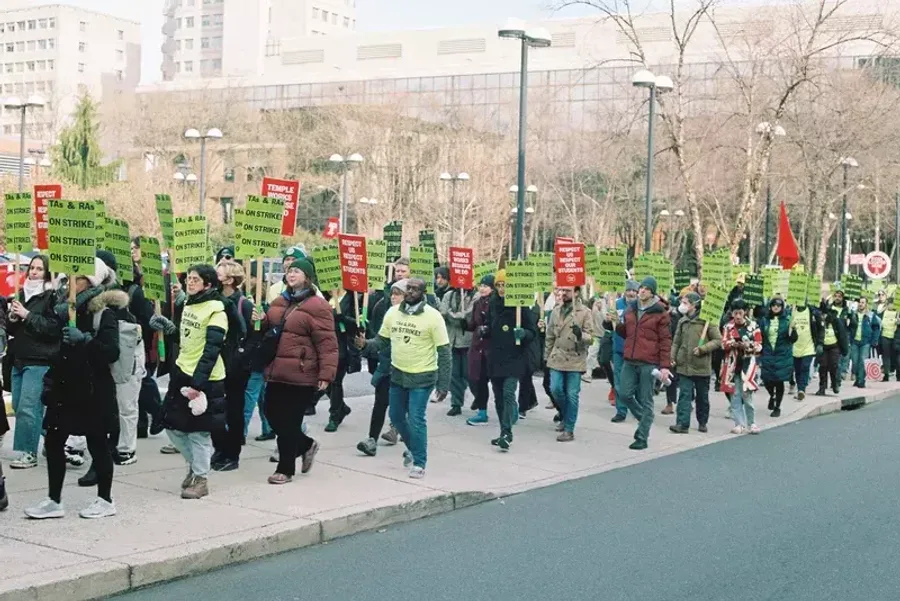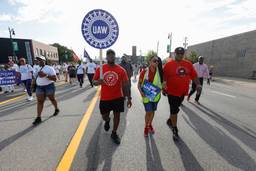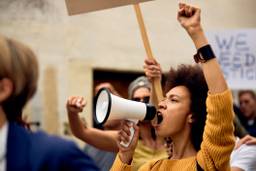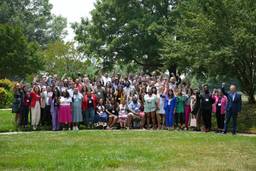In 1996, There Was Union Summer. This Year, There’s “Labor Spring.”
“Labor Spring” brings back a national teach-in on organizing to campuses across the country.
Cindy Hahamovitch, William P. Jones and Joseph A. McCartin

Something is stirring this spring. People in the U.S. are becoming increasingly interested in what commentators once called “the labor question,” following recent organizing victories at Starbucks, Amazon and Apple stores; well-publicized strikes of teachers, nurses and railway workers; and the unionization of staff, graduate assistants and even faculty at scores of campuses, including the recent successful strike of nearly 50,000 academic workers on the campuses of the University of California.
Evidence of this mood shift is unmistakable this spring as students, campus staff and faculty, together with unions and community allies, are coming together on or adjacent to more than 50 campuses nationwide — including ours — to engage in a remarkable national teach-in on worker rights and organizing called Labor Spring.
It has been a long while since we’ve felt this level of energy on our campuses around labor issues. The last such moment arguably crested in the second half of the 1990s. Following the election of John Sweeney to the presidency of the American Federation of Labor and Congress of Industrial Organizations (AFL-CIO) in 1995, a spirit of change swept the labor movement and attracted the attention of young people. Sweeney’s union, the Service Employees International Union (SEIU), had helped catalyze that spirit in the 1990s with its innovative Justice for Janitors campaign, which won significant victories for low-waged immigrants and workers of color through militant bridge blockades and similar acts of civil disobedience. Sweeney brought that spirit with him into the AFL-CIO’s leadership when he defeated Thomas R. Donahue in the first contested election in the labor federation’s history. His victory signaled a sea change in a movement that had suffered years of decline.
One of the most important features of Sweeney’s tenure was his effort to heal the lingering divisions that had developed between unions and student activists in the era of the Vietnam War. The healing of that decades-old schism paved the way for Union Summer, an effort to recruit young people to union organizing, which the AFL-CIO launched in the summer of 1996. That fall, another significant project took wing, a series of labor teach-ins at Columbia University, the University of Virginia and eight other campuses that helped electrify young people and attract them to the labor movement. Reporting on the overflow crowd that attended the Columbia teach-in, the New York Times likened its energy to that of a rock concert.
The 1996 teach-ins contributed to a remarkably fruitful period of labor activism. In their wake, an anti-sweatshop movement took shape on college campuses that gave rise to United Students Against Sweatshops and the Worker Rights Consortium to investigate and expose abuse and protect worker rights in factories around the globe. The teach-ins gave birth to campus living wage campaigns and to Scholars, Artists and Writers for Worker Justice (SAWSJ), which in turn paved the way for our organization, the Labor and Working Class History Association (LAWCHA), which was founded in 1998. Organizing on campuses also took off following the 1996 teach-ins. The United Auto Workers (UAW) won representation elections for graduate assistants at UCLA, Berkeley and six other University of California campuses in 1999, following a systemwide strike in December 1998. Then, in May 1999, the UAW filed a petition for a representation election for teaching assistants at New York University, inaugurating a long struggle to bring unionization to graduate assistants at private universities, a struggle which continues to the present day.
That period of activism was transformative. Among other things, it helped build the bridges between unions, environmentalists and critics of globalization that led to the “Teamsters and Turtles” alliance visible in the protests against the World Trade Organization during the “Battle of Seattle” in 1999 and the World Bank protests in Washington, D.C., in 2000. It also laid the groundwork for the AFL-CIO’s dramatic shift on immigration policy in 2000, when it embraced comprehensive immigration reform and began championing the cause of undocumented immigrant workers.
Unfortunately, this hopeful surge of creative, youthful energy was undercut by the events of Dec. 12, 2000 and Sept. 11, 2001, the first being the Supreme Court’s Bush v. Gore decision determining the outcome of the contested presidential election of 2000, and the second being the attacks undertaken by the followers of Osama bin Laden, which opened the door to a “War on Terror” that went on to dominate the national agenda for years. Nor would the energy of the late 1990s reemerge in the decade that followed. The housing bubble and financial crash of 2008, the subsequent Great Recession and the period of austerity that followed it created trying times for young people, educational institutions and the labor movement.
Now, however, a new and different moment is taking shape and we are seeing evidence of it on our campuses, in our students and co-workers, and among our community and labor allies. Even in the South, where most public workers lack collective bargaining rights, the United Campus Workers, a movement seeking to organize public university employees — graduate students, undergraduate employees, staff and faculty — in one wall-to-wall union, has been spreading from campus to campus.
This is why our organization, LAWCHA, has decided to promote the Labor Spring teach-ins and actions. We welcome other organizations to join with us in this effort.
Labor Spring will differ from the teach-ins held in 1996, whose reach was confined to 10 mostly elite campuses. As it unfolds through March and April, Labor Spring will take place on dozens of public and private campuses from Massachusetts to Hawaii, in blue states like Illinois, purple states like Georgia and North Carolina, and red states like Louisiana, Nebraska and Texas; it will happen at big public institutions like Berkeley and smaller ones, like New York’s Dutchess Community College; it will take place at HBCUs like Howard and Tuskegee, at theological schools like the Vanderbilt Divinity School, and in law schools ranging from the City University of New York to Harvard, Yale and Stanford. Organizers in each setting will convene people — workers, students, community members, faculty, unions and allies (some of which are now overlapping categories) — in gatherings that consider local and national labor issues and help direct people toward actions that they can take on their campus, in their workplace or in their community to advance worker justice.
The breadth of interest represented by this remarkable diversity of settings confirms to us that the moment is right not only to reclaim the lost promise of the labor-campus alliance of the late 1900s, but to broaden and deepen it. Today’s young people have learned how to organize intersectionally in Black Lives Matter and reproductive rights protests in ways that their predecessors in the 1990s did not. Today’s essential workers, both on and off our campuses, have learned that while their work is essential, they are still treated as expendable. Today’s faculty face attacks on their academic freedom and the normalization of contingent employment. Today’s labor movement is also different. Its leadership has never been more diverse, inclusive and representative of the working-class it represents. Equally important, through new initiatives such as Bargaining for the Common Good, sectoral bargaining and wall-to-wall organizing, today’s labor movement is learning to creatively adapt the tools of organizing and bargaining that it developed in the 20th century to the very different form of capitalism that workers face today.
The times too have changed in ways that create both new opportunities and increased urgency. The 1996 labor teach-ins happened at neoliberalism’s zenith. Today, by contrast, we are witnessing the accelerating decomposition of neoliberalism, as the leaders of both political parties jettison tired shibboleths of the ’90s like “free trade” and struggle to respond to and channel populist discontent, either by directing it toward the right in the form of ethnonationalism, anti-immigrant animus and “anti-wokism,” or toward the left through economic policies that serve the needs of working people and help build a just and environmentally sustainable economy. After declining to a historic low in 2010, public approval of labor unions has rebounded nearly to an all-time high. Young people will help determine which of these visions win out.
These times are also different in another way, for today democracy too hangs in the balance in a way that was not quite so evident in the 1990s. Back then many believed that the end of the Cold War would usher in “the end of history.” We now see that the dynamics ascendant at that time — deindustrialization, deregulation, de-unionization, financialization, the “fissuring” of employment relations, a deepening international migration crisis — have introduced increasing precarity into both workers’ lives and our democratic institutions. Unless we reverse these dynamics, the threats to democracy that we have witnessed in recent years will surely grow.
So we are joining this spring with our students, co-workers and community and labor allies to again take up the labor question on our campuses and across this nation. We urge you to join with us. To find out how, go to laborspring.org

I hope you found this article important. Before you leave, I want to ask you to consider supporting our work with a donation. In These Times needs readers like you to help sustain our mission. We don’t depend on—or want—corporate advertising or deep-pocketed billionaires to fund our journalism. We’re supported by you, the reader, so we can focus on covering the issues that matter most to the progressive movement without fear or compromise.
Our work isn’t hidden behind a paywall because of people like you who support our journalism. We want to keep it that way. If you value the work we do and the movements we cover, please consider donating to In These Times.
Cindy Hahamovitch is a historian at the University of Georgia and the current president of Labor and Working Class History Association (LAWCHA).
William P. Jones is a historian at the University of Minnesota and the former president of the Labor and Working Class History Association (LAWCHA).
Joseph A. McCartin is a historian at Georgetown University and the incoming president of the Labor and Working Class History Association (LAWCHA) as of 2024.



